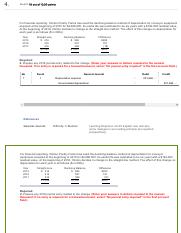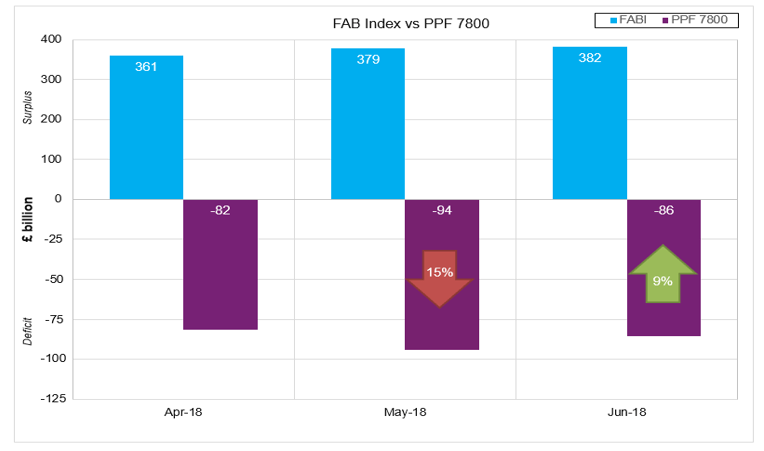Content

Corporations may issue bonds to fund expansion or to pay off other loans. If they expect market interest rates to fall, they may issue the bond as callable, allowing them to make an early redemption and secure other financings at a lowered rate. The bond’s offering will specify the terms of when the company may recall the note.
Corporate Bonds means a debt obligation of a United States-chartered corporation with a maturity date greater than 270 days, which may be interest-bearing or discount-purchased. Once that date comes, the issuer can call the bond anytime and its premium price starts decreasing. It is calculated on an annual basis, as well as quarterly and monthly yields. For example, the bond may be issued at a par value of 1000$, and a company would pay 1040$ when they call the bond. A maturity date is the date when the bond issuer must pay off the bond. The difference between the cash from the bond sale and the face value of the bond must be credited to a bond premium account.
Redeemable Bonds – Explained
In other words, it is merely an act of replacing an ongoing debt obligation with a further debt obligation concerning specific terms and conditions like interest rates tenure. ABC Corp. issues bonds with a face value of $100 and a coupon rate of 6.5% while the current interest rate is 4%. These bonds generally come with certain restrictions on the call option. For example, the bonds may not be able to be redeemed in a specified initial period of their lifespan. In addition, some bonds allow the redemption of the bonds only in the case of some extraordinary events. Allows the issuer to call its bonds before maturity if certain specified events occur, such as the project for which the bond was issued to finance has been damaged or destroyed.
What are examples of callable bonds?
Example of a Callable Bond
The company pays its bondholders 6% x $10 million or $600,000 in interest payments annually. Three years from the date of issuance, interest rates fall by 200 basis points (bps) to 4%, prompting the company to redeem the bonds.
Treasury bonds and notes are non-callable bonds with few exceptions. Issuers usually issue bonds with a call feature to raise money in a safer way in which they can call the bonds when interest rates go down and issue new ones with lower interest payments. The options embedded in a particular bond are described in the applicable callable bonds definition Offering Notice or Pricing Supplement for the bond. The dealer should provide these documents to investors prior to or at settlement. But these benefits aren’t without their tradeoffs, so it’s important that investors carefully consider their investment options and fully understand what they are getting themselves into.
Yield to Worst (YTW)
An American Callable Bond can be redeemed by the issuer at any time prior to its maturity and usually pays a premium when the bond is called. A municipal bond has call features that may be exercised after a set period such as 10 years. A callable—redeemable—bond is typically called at a value that is slightly above the par value of the debt. The earlier in a bond’s life span that it is called, the higher its call value will be. This price means the investor receives $1,020 for each $1,000 in face value of their investment. The bond may also stipulate that the early call price goes down to 101 after a year.

For coupon bonds, the bond issuer is supposed to pay both the par value of the bond and the last coupon payment at maturity. To record a bond issued at par value, credit the “bond payable” liability account for the total face value of the bonds and debit cash for the same amount. But say that bond is called early after only holding it for five years. If your bond is called and you aren’t expecting it, it can have a significant impact on your expected return on investment from that bond. Moreover, if you are counting on the steady stream of income from the coupon, you might find that stream dried up, and you might not be able to find a suitable replacement investment for that cash. The early repayment of callable bonds results in shortened portfolio durations.
Examples of Callable Bonds
The only difference is that these bonds give companies the flexibility to redeem them before maturity or refinance the bond when interest rates fall. So, companies opt for callable bonds if they predict a reduction in the interest rates in the future or if they can secure a corpus to redeem the bonds before maturity. While raising capital, callable bonds also allow companies to cut down on interest costs by redeeming the bonds earlier than maturity. A callable bond is a debt instrument in which the issuer reserves the right to return the investor’s principal and stop interest payments before the bond’smaturity date.
- When the bond is issued, the company must record a liability called “bond payable. ” This is generally a long-term liability.
- Please complete this reCAPTCHA to demonstrate that it’s you making the requests and not a robot.
- When market rates are down, investors who gave away the bonds when the issuer calls them may want to reinvest, but this time with lower interest rates, the price of bonds could be trading higher than previous bonds.
- Invest in them only if they align with your financial needs and investment strategies.
- The price of the puttable bond is always higher than the straight bond as there is a put option which is an added advantage to the investor.
Callability — Some bonds give the issuer the right to repay the bond before the maturity date on the call dates. When you search FINRA’s Market Data Center by issuer, it will show you which of that issuer’s bonds are callable, and which are not. Always be sure to triple-check a bond’s identifying number, known as its CUSIP, to be sure you are looking at the right ones. When you click through to a bond’s detail page, you will find a link to its prospectus in the top right corner of the screen. There are a few main kinds of call options for bonds, including optional and extraordinary redemption options.
If you want to invest in other bonds, the interest rates on such bonds would be lower given the reduced interest rates. So, you would have to search for a suitable debt instrument that offers a similar interest to minimize the loss. Companies issue bonds to finance their activities and compensate investors with interest payments paid each period until the maturity date. Interest rates play a significant role in determining whether a bond will be called early or not. Is the lowest yield an investor expects while investing in a callable bond. Generally, callable bonds are good for the issuer and bad for the bondholder.
- Extraordinary Redemption allows the issuer to redeem the bonds when an unusual event hits the source revenue of the company.
- Callable bonds pay higher interest to the investors as the issuer has the option to call the bond anytime they want.
- A callable bond is a bond that can be redeemed by its issuer before the maturity date.
- The information contained in this article is for general purposes only and not a complete disclosure of every material fact.
- Always be sure to triple-check a bond’s identifying number, known as its CUSIP, to be sure you are looking at the right ones.
- Callable bonds, which are sometimes called redeemable bonds, have become quite popular in recent years.

Recent Comments